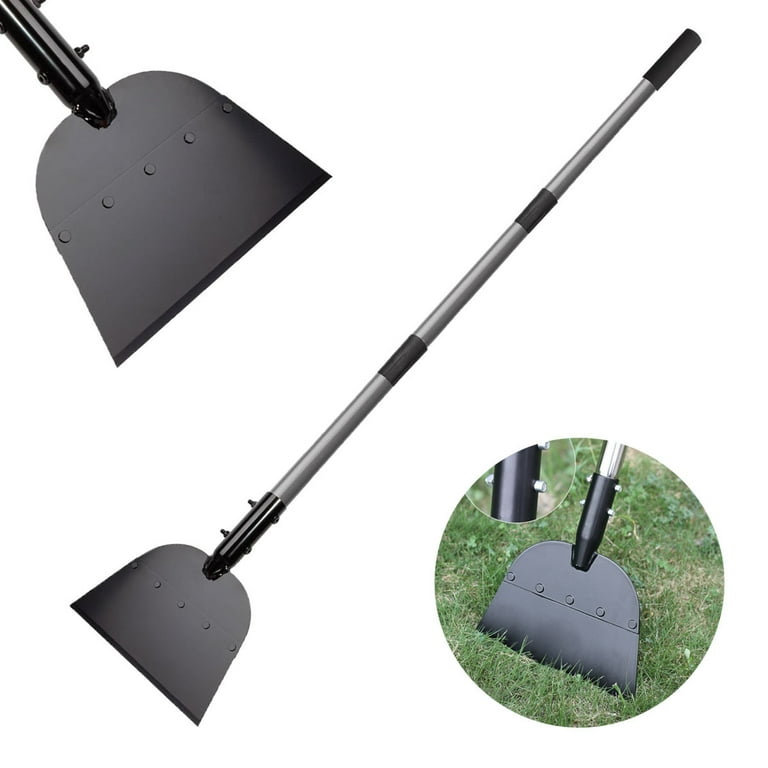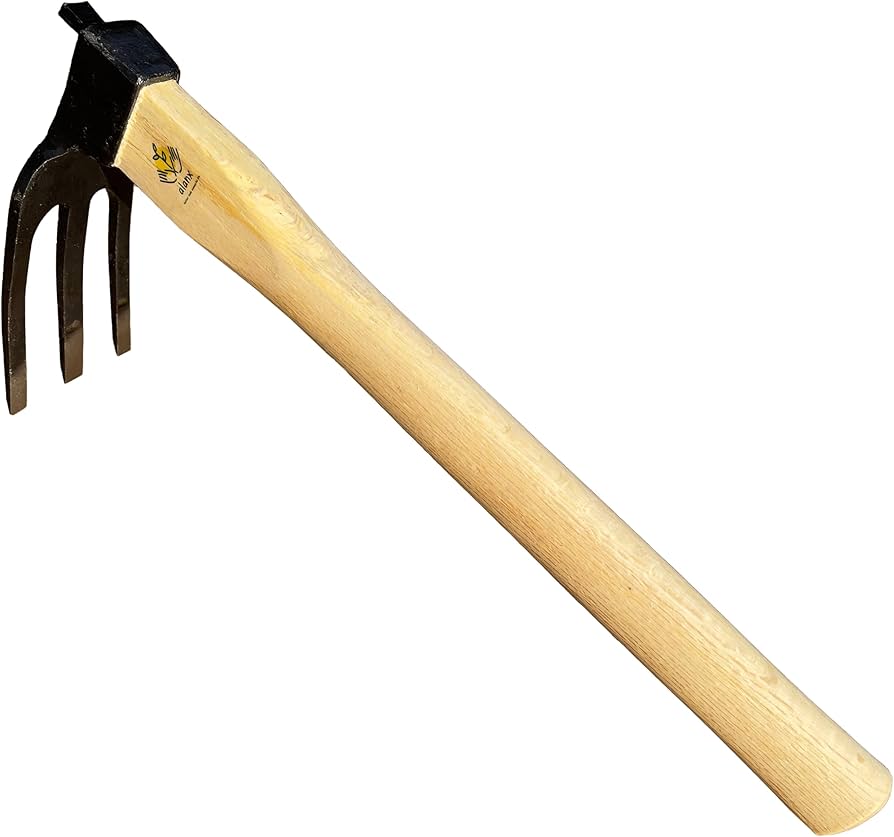As an Amazon Associate, I earn from qualifying purchases.
To prepare tools for heavy-duty gardening tasks, start by cleaning and sharpening them. Proper maintenance ensures efficiency and longevity.
Gardening can be a rewarding yet challenging hobby, especially when dealing with heavy-duty tasks. The right tools, in good condition, make all the difference. Whether you’re digging, pruning, or tilling, well-prepared tools save time and effort. Clean, sharp, and well-maintained equipment not only performs better but also reduces the risk of injury.
In this guide, we’ll explore simple steps to keep your gardening tools in top shape. This will help you tackle even the toughest gardening jobs with ease. Let’s dive into the essentials of tool preparation for a productive gardening experience.

Essential Gardening Tools
Heavy-duty gardening tasks require reliable tools. Having the right tools makes the job easier and more efficient. Let’s discuss the essential gardening tools you need.
Must-have Tools
The following tools are essential for any gardener. These tools help with digging, cutting, and maintaining your garden.
- Spade: A spade is useful for digging and edging. Choose one with a sturdy handle.
- Pruning Shears: These are perfect for cutting small branches and shrubs. Look for sharp and durable blades.
- Garden Rake: A rake is necessary for clearing leaves and debris. Opt for one with adjustable tines.
- Wheelbarrow: Use a wheelbarrow for moving soil, compost, and plants. A strong, lightweight wheelbarrow works best.
- Gloves: Protect your hands with quality gloves. Choose gloves that are thick and comfortable.
Optional Tools
These tools are not essential but can make your gardening tasks easier and more enjoyable.
- Garden Fork: This tool is great for turning soil and aerating your garden beds.
- Hose with Nozzle: A hose with an adjustable nozzle helps with watering plants. Look for a nozzle with different spray settings.
- Weeder: Use a weeder to remove unwanted plants. It helps keep your garden neat.
- Garden Kneeler: A kneeler provides comfort while working on the ground. Some models double as a seat.
- Plant Labels: Labels help you keep track of your plants. They are useful for maintaining an organized garden.

Choosing Quality Tools
Choosing quality tools is essential for heavy-duty gardening tasks. With the right tools, your gardening becomes easier and more effective. High-quality tools save time and reduce effort. They also last longer and perform better.
Material Selection
Pay attention to the materials used in your gardening tools. Stainless steel is a great choice. It resists rust and stays sharp. Carbon steel is another good option. It is strong and can handle tough tasks. Wooden handles provide comfort and durability. Look for tools with hardwood handles. They absorb shock and reduce hand strain. Avoid plastic handles. They break easily and don’t last long.
Brand Recommendations
Choosing the right brand can make a big difference. Fiskars offers reliable and durable tools. Their products are well-designed and user-friendly. Another trusted brand is Felco. Known for their pruners, they deliver precision and comfort. Spear & Jackson also produce high-quality tools. Their products are robust and built to last. Invest in reputable brands for better performance and longevity.
Tool Maintenance Basics
Proper tool maintenance is crucial for heavy-duty gardening tasks. Well-maintained tools last longer and work better. Below are essential tips to keep your tools in top condition.
Cleaning Techniques
Regular cleaning prevents rust and damage. Use these simple steps:
- Remove dirt: Use a wire brush to clean off dirt and debris.
- Wash tools: Rinse with water and mild soap. Dry them thoroughly.
- Disinfect: Use a solution of one part bleach to nine parts water.
- Oil metal parts: Apply a light coat of oil to prevent rust.
Sharpening Tips
Sharp tools make gardening easier and safer. Follow these tips to keep your tools sharp:
- Identify the bevel edge: Check which side of the blade has the bevel.
- Use a file or stone: Sharpen the blade at the same angle as the bevel.
- Maintain consistency: Apply even pressure to avoid uneven sharpening.
- Check sharpness: Test the blade on a piece of paper. It should cut easily.
- Safety first: Always wear gloves and eye protection while sharpening.
Storage Solutions
Proper storage solutions are essential for maintaining the longevity and efficiency of your gardening tools. By organizing your tools, you can easily access them and prevent damage. This section will explore both indoor storage and outdoor storage options to help you keep your equipment in top condition.
Indoor Storage
Indoor storage is ideal for protecting your tools from harsh weather. Here are some effective solutions:
- Wall-mounted racks: These save space and keep tools visible.
- Shelving units: Use sturdy shelves to store heavier items.
- Toolboxes: Keep small tools and accessories organized.
- Hooks and Pegboards: Great for hanging hand tools and keeping them within reach.
Consider a dedicated storage room or area in your garage or basement. This keeps your tools clean and safe from moisture.
Outdoor Storage
Outdoor storage can be convenient, especially if you lack indoor space. Here are some options:
- Storage sheds: A shed provides ample space and protects from weather.
- Weatherproof cabinets: These are ideal for smaller yards and offer protection.
- Garden tool racks: Place these near your garden for easy access.
- Lockable storage boxes: Secure your tools and prevent theft.
Ensure your outdoor storage solutions are weatherproof to prevent rust and damage. Regularly inspect and clean your tools to extend their lifespan.
| Storage Option | Indoor | Outdoor |
|---|---|---|
| Wall-mounted racks | ✔️ | ✔️ |
| Shelving units | ✔️ | ✔️ |
| Toolboxes | ✔️ | ❌ |
| Hooks and Pegboards | ✔️ | ✔️ |
| Storage sheds | ❌ | ✔️ |
| Weatherproof cabinets | ❌ | ✔️ |
| Garden tool racks | ❌ | ✔️ |
| Lockable storage boxes | ❌ | ✔️ |
By choosing the right storage solutions, you ensure your gardening tools remain in excellent condition. This not only saves time but also enhances your gardening experience.
Safety Gear
Preparing for heavy-duty gardening tasks involves more than just tools. Safety gear is crucial. Protect yourself from potential hazards. Wear proper protective clothing and use essential safety equipment.
Protective Clothing
Proper protective clothing can prevent injuries. Long sleeves and pants shield your skin. Thick, durable fabric adds extra protection. Avoid loose clothing that can get caught. Choose breathable materials to stay comfortable.
Sturdy boots are essential. They protect your feet from sharp objects and heavy tools. Steel-toed boots offer even more protection. Non-slip soles provide stability on uneven ground. Always wear thick, protective gloves. They prevent cuts, blisters, and contact with harmful substances.
Safety Equipment
Safety equipment is just as important as protective clothing. Always wear safety goggles. They protect your eyes from flying debris. Dust masks are essential for dusty conditions. They prevent inhalation of harmful particles.
Ear protection is necessary when using loud tools. Prolonged exposure to noise can damage hearing. Use earplugs or earmuffs. A hard hat can protect your head from falling objects. Consider wearing knee pads for tasks that require kneeling.
Proper safety gear ensures you can tackle heavy-duty gardening tasks without injury. Stay safe and enjoy your gardening.

Preparing Tools For Use
Heavy-duty gardening tasks require well-prepared tools. Proper preparation ensures efficiency and safety. Let’s dive into the essentials of preparing tools for use.
Pre-use Inspection
Before using any tool, always perform a pre-use inspection. Check for signs of wear and tear. Look for cracks, rust, or loose parts. Inspect handles for splinters or breaks. Ensure the blades are sharp and undamaged.
- Check for cracks and rust.
- Inspect handles for splinters.
- Ensure blades are sharp.
- Look for loose parts.
Conducting these checks can prevent accidents. It also prolongs the tool’s life.
Tool Adjustments
Proper adjustments enhance tool performance. Start by adjusting the handles. Ensure they are tight and secure. If the tool has movable parts, ensure they move smoothly.
For cutting tools, adjust the blade tension. Refer to the manufacturer’s guide for the correct tension. Adjusting the tension improves cutting accuracy and reduces strain.
| Tool Type | Adjustment Needed |
|---|---|
| Pruners | Blade tension |
| Shovels | Handle security |
| Hoes | Blade alignment |
Regular adjustments maintain tool efficiency. It also reduces physical strain during use.
Handling Heavy Tools
Handling heavy gardening tools requires proper techniques. Proper handling prevents injuries and makes tasks easier. This section provides tips on lifting and ergonomic methods for heavy-duty gardening.
Proper Lifting
Proper lifting is crucial for preventing injuries. Follow these steps:
- Stand close to the tool with your feet shoulder-width apart.
- Bend your knees and keep your back straight.
- Firmly grip the tool with both hands.
- Lift with your legs, not your back.
- Keep the tool close to your body.
Remember to avoid twisting your body while lifting. Turn your whole body instead.
Ergonomic Techniques
Using ergonomic techniques reduces strain and increases efficiency. Consider the following tips:
- Use tools with padded handles to reduce hand strain.
- Choose tools with adjustable lengths to suit your height.
- Keep your wrists straight while using tools.
- Take frequent breaks to avoid fatigue.
- Use both hands to distribute the weight evenly.
These techniques help maintain comfort and prevent injuries during gardening tasks.
Seasonal Tool Care
Taking care of gardening tools through different seasons is essential. Proper seasonal tool care ensures that your tools last longer and work efficiently. This guide will help you understand how to prepare your tools for each season.
Winterizing Tools
Winter can be harsh on gardening tools. Follow these steps to protect them:
- Clean your tools thoroughly. Remove dirt and sap with a wire brush.
- Dry them completely. Moisture can cause rust.
- Sharpen blades. This prevents damage and makes them ready for spring.
- Apply a thin layer of oil. It prevents rust on metal parts.
- Store tools in a dry place. Avoid damp areas.
Spring Readiness
As spring approaches, your tools need to be in top condition. Here’s how to get them ready:
- Inspect all tools for damage. Replace broken handles and worn-out parts.
- Re-sharpen all blades. Sharp tools make gardening easier.
- Lubricate moving parts. Use oil to ensure smooth operation.
- Check for rust. Remove it with a wire brush and apply a rust inhibitor.
- Test all power tools. Charge batteries and check that everything works.
Proper seasonal tool care can make a big difference. It helps in maintaining the efficiency and longevity of your gardening tools.
Frequently Asked Questions
What Tools Are Essential For Heavy-duty Gardening Tasks?
Essential tools include shovels, rakes, pruners, wheelbarrows, and garden forks. These help with digging, lifting, and cutting.
How Do You Maintain Gardening Tools For Longevity?
Clean tools after use. Sharpen blades regularly. Store in a dry place. Oil metal parts to prevent rust.
What Type Of Gloves Are Best For Heavy-duty Gardening?
Heavy-duty gloves with reinforced palms protect hands. Look for water-resistant and puncture-proof materials.
How Often Should You Sharpen Gardening Tools?
Sharpen tools every few months. More often if used frequently. Sharp tools make work easier and safer.
Can Power Tools Help With Heavy-duty Gardening?
Yes, power tools like tillers, chainsaws, and leaf blowers save time and reduce physical effort. Use them safely.
Conclusion
Preparing tools for heavy-duty gardening tasks ensures efficiency and safety. Clean tools after each use. Sharpen blades for precise cuts. Lubricate moving parts to prevent rust. Store tools in a dry place. Regular maintenance extends their lifespan. Proper preparation saves time and effort.
Always wear protective gear while working. Happy gardening!

